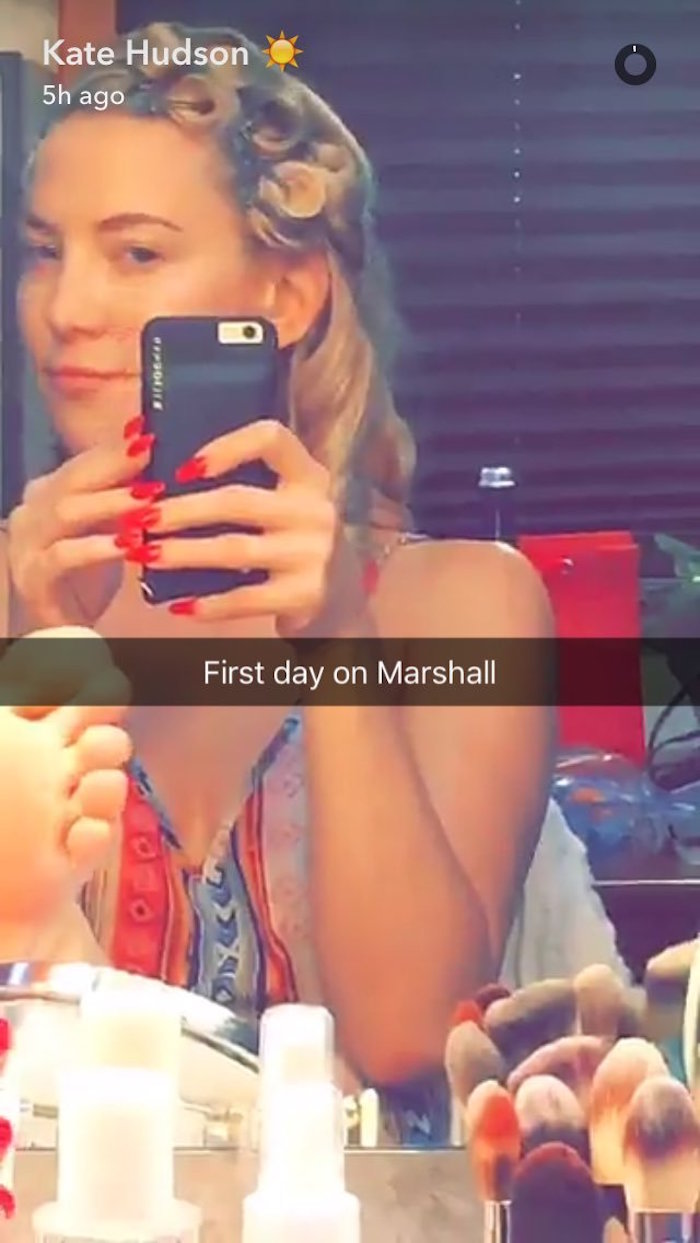MOVIES | By Tony Maglio on July 1, 2016 @ 7:11 am
It’s even cooler when you think of this as Olaf, Black Panther and Chris Darden on the haromnies
“Motown Philly” is back again, indeed.
Actors Josh Gad, Chadwick Boseman and Sterling K. Brown covered the Boyz II Men hit from the set of their new film, “Marshall.” The guys were still in costume, which certainly adds something to the performance.
If the suits and harmonies aren’t enough for you, just close your eyes and picture Olaf, Black Panther and Chris Darden doing the chorus and bridge.
Watch the video above.
“Marshall” follows the early days of Thurgood Marshall (Boseman), the first African-American justice appointed to the U.S. Supreme Court.
Gad co-stars as Marshall’s newbie law partner, Samuel Friedman. Brown portrays the man they’re both defending, Joseph Spell.
Comment
+ Permalink
Jeff Preval, WGRZ 5:07 PM. EST June 22, 2016
BUFFALO, NY – Filming of a big Hollywood movie in Buffalo has now moved to a key downtown. Crews took over an empty courthouse building in Niagara Square Wednesday.
They’ve been working the past two days inside the Dillon courthouse. This was once a busy federal courthouse downtown.
And the building’s interior hasn’t changed a bit.
That’s what filmmakers of the Thurgood Marshall movie really liked about it, when they decided to come to Buffalo. Filming began last month. And the entire movie is being shot in Western New York. The film crew has been all over, Akron and Batavia, Niagara Falls and the Central Terminal, among other places.
But, it was the Dillon Courthouse that offered a unique, vintage courtroom setting that movie makers fell in love with.
“The fixtures are there the jury chairs are there the jury boxes the judges box, all of that stuff remains so it looks really perfect and period and perfect for this movie in the end this is really where the big drama happens in the courtroom so you’re going to see a lot of our courtroom in the movie,” said Tim Clark of the Buffalo Niagara Film Commission.
As for the big stars in the movie, Chadwick Boseman who played Jackie Robinson in the movie “42” plays Thurgood Marshall. And Kate Hudson also stars in the movie.
Filming should wrap up early next month. A release date for the movie hasn’t been announced yet.
Comment
+ Permalink
By Evan Anstey, News 4 Digital Producer Published: June 17, 2016, 6:59 am

BUFFALO, N.Y. (WIVB) — Kate Hudson is getting ready to start filming her part in the upcoming “Marshall” movie being shot in Buffalo.
The Oscar-nominated actress was seen taking pictures and Snapchat videos in Niagara Falls while viewing the local sights and riding the Maid of the Mist.
Later on, a new video appeared with Hudson in the hair-and-makeup chair getting ready to go on set. The caption on the video read “First Day on Marshall.”
In the movie about Thurgood Marshall, the U.S. Supreme Court’s first African-American justice, Hudson plays wealthy socialite Eleanor Strubing.
The movie will be released later this year.
Comment
+ Permalink
June 24, 2016

AMHERST, N.Y. – Filming in the Buffalo Niagara region for “Marshall,” a legal thriller starring Chadwick Boseman as a young Thurgood Marshall, a future Supreme Court justice, was recently on location at Daemen College’s presidential residence, where scenes were shot for the new movie.
“We are thrilled and honored to have Daemen House selected as a location for a major motion picture that will bring national attention to the Western New York region,” said President Gary A. Olson. “To be a part of a production of this magnitude was a unique opportunity to showcase the college.”
Cast and crew members from “Marshall” were at Daemen House in Amherst in June to film scenes for the residence of wealthy socialite Eleanor Strubing, being played by star Kate Hudson. Furniture and other early 1940s era modifications were temporarily made to the first and second floors for interior scenes filmed with Hudson and Sterling K. Brown, who recently starred in the series “The People vs. O.J. Simpson: American Crime Story.”
The movie was inspired by a notorious trial early in the career of Thurgood Marshall. As a brilliant young attorney for the NAACP, Marshall traveled across the nation defending black men unjustly accused of crimes. In 1940 on the eve of World War II, Marshall partnered with Sam Friedman, a Jewish lawyer from Bridgeport, Conn., to defend Joseph Spell, a black chauffeur accused of sexually assaulting his employer, socialite Eleanor Strubing. Marshall later became the first African American justice on the U.S. Supreme Court.
Daemen House was chosen as the Strubing residence for its historical look and feel that reflects the film’s period, explained Tim Clark, film commissioner of the Buffalo Niagara Film Commission.
“The beautiful architecture and other details in Daemen House bring a historical authenticity to the scenes that were filmed there,” said Clark. “When production designer Richard Hoover first saw the residence, he was very impressed with it and knew the location would fit perfectly with the period continuity needed in the movie.”
While most filming was done inside the residence, the home’s exterior was also captured in an important scene of the film. Crews are expected to be in the Buffalo area through July.
“Vintage elements are critical to a period movie like this so having access to Daemen House was helpful to enhancing the film’s historical setting,” said Clark.
Comment
+ Permalink


